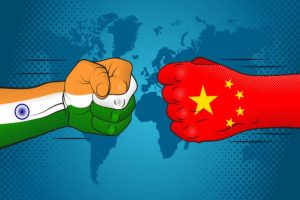The latest meeting between External Affairs Minister S Jaishankar and Chinese Foreign Minister Wang Yi represents a hopeful development in the on-going border disputes between India and China. With a shared Himalayan border that remains poorly demarcated and a history of military clashes, the urgency in addressing these issues cannot be overstated. This dialogue, held on the sidelines of the ASEAN summit in Laos, underscores the critical need for both nations to prioritise peace and stability.
The significance of this meeting lies in the explicit acknowledgment by both sides of the necessity to disengage and respect the Line of Actual Control (LAC). The 2020 clash, which resulted in the loss of lives on both sides, marked a severe deterioration in bilateral relations, reminding both countries of the high stakes involved in their territorial disputes. Since then, the fortification of positions and the deployment of additional troops along the border have only heightened tensions.
Advertisement
Therefore, the agreement to approach the disengagement process with a sense of purpose and urgency is a welcome development. A key aspect of the discussion is the emphasis on providing strong guidance to ensure full respect for the LAC and adherence to past agreements. This focus is crucial because it signals a commitment to a framework that both sides have previously agreed upon, thereby creating a foundation for trust and cooperation. Respecting these agreements is not merely a diplomatic formality but a necessary step towards deescalating the situation on the ground and preventing future conflicts. Moreover, the call for urgency in resolving these border issues reflects a broader recognition that the state of the border will inevitably influence the overall bilateral relationship. For decades, the border issue has been a significant impediment to the full realisation of the potential in India-China relations.
Both nations stand to gain considerably from a stable and peaceful border, which would facilitate better economic, cultural, and political exchanges. A stable border could open avenues for collaboration in areas such as trade, technology, and climate change, which are vital for both countries’ growth and development. However, while the meeting is a positive step, it is essential to remain cautiously optimistic. The path to complete disengagement and lasting peace is fraught with challenges. Historical grievances, nationalist sentiments, and strategic interests will continue to influence the dynamics of India-China relations. Both governments must navigate these complexities with patience and a long-term vision. Confidence-building measures, sustained dialogue, and transparent communication will be crucial in maintaining the momentum towards peace.
The role of international and regional organisations, such as ASEAN, can also be pivotal in facilitating dialogue and providing platforms for constructive engagement. Multilateral forums offer a space for both countries to engage in dialogue away from the direct pressures of bilateral negotiations, potentially leading to more creative and flexible solutions. But there is one trap New Delhi must not fall into ~ allowing a restoration of normal relationships in other spheres while the border question remains unresolved.











